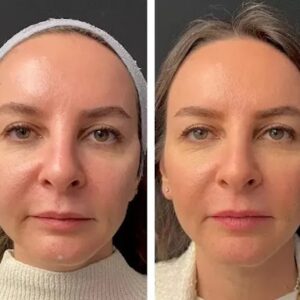(Dr. Anil jain Internationally renowned, widely experienced (44 years)
Hip pain affects many aspects of daily life. Simple tasks like sitting, walking, or climbing stairs can become painful challenges. Whether the pain is sharp and recent or has persisted for a long time, knowing how to adjust your habits can help manage it more effectively.

Studies show that around 10% of people live with ongoing hip pain, and about 14.3% of adults report significant discomfort lasting at least six weeks. The good news is that making specific lifestyle changes, seeking proper medical advice, and following guidance from skilled health experts can often relieve many types of hip pain.
If you are experiencing persistent hip discomfort, consulting a Doctor for hip pain in Ghaziabad can help you get an accurate diagnosis and personalized treatment plan to improve mobility and quality of life.
Understanding Hip Pain: Causes and Impact on Daily Life
Hip pain troubles millions , with rates rising from 17.02 to 18.70 per 100,000 people between 1990 and 2019. Many factors can lead to this issue, like arthritis, bursitis, strained muscles, fractures, or joint wear-and-tear. The hip joint, one of the body’s biggest weight-bearing joints, takes on heavy stress in everyday movements.
To find an Orthopedic Hospital in Ghaziabad locals rely on, you need to think about their experience and skill in treating hip pain. A lot of people start by searching for a hip pain doctor near me. This method works well to get care that’s easy to reach. Hip pain that goes untreated doesn’t just cause aches. It affects how you sleep, your ability to focus at work, and even your mental health.
Evidence-Based Lifestyle Modifications for Hip Pain Relief
Weight Management and Nutritional Approach
Keeping a healthy weight helps reduce the strain on hip joints. Studies show that carrying too much weight places a lot of pressure on hip joints so managing weight becomes a key part of dealing with pain. A good plan involves eating balanced meals with vegetables, fruits, lean proteins, and whole grains. Adding exercise to these dietary changes helps even more.
The leading orthopedic doctor in Ghaziabad creates customized treatment plans based on each patient’s needs. They often highlight how losing weight can make a difference. Dropping even 5-10% of your weight can ease hip pain and improve movement.
Anti-Inflammatory Diet Strategies
Adding anti-inflammatory foods to meals can ease joint swelling and discomfort. Eat more foods high in omega-3s like salmon, flaxseeds, and walnuts. Avoid eating too much processed food, sugary snacks, and foods with a lot of saturated fat. Ingredients like turmeric, ginger, and green veggies seem to help lower inflammation levels.
Exercise and Physical Activity Recommendations
Studies show certain gentle exercises play an important role in making hip muscles stronger and improving how well they move. Some of the best ones include:
Swimming and Water Workouts: Water acts as both support and resistance, which helps people with hip pain exercise more . It takes pressure off joints and lets the body move without pain.
Walking Plans: Begin by walking short distances then walk longer and pick up the pace over time. Wear shoes that have strong arch support to keep your hips aligned and lessen stress on them.
Bike Riding: You can ride a stationary bike indoors or cycle outdoors to keep your hip joints moving and boost hip muscle strength. Make sure the bike is adjusted to fit your body to prevent worsening any discomfort.
Yoga and Stretches: Gentle yoga moves along with specific stretches aim to improve how your hips move and stay flexible. Doing these often can keep your motion smooth and reduce tightness.
Strengthening Exercise Protocol
To build strength, exercises should focus on hip flexors stabilizing muscles, and extensors. Some of the top moves to include are the following:
- Do hip bridges to make the glutes and hamstrings stronger.
- Try clamshell exercises to build hip abductor strength.
- Perform straight leg raises to focus on hip flexor strength.
- Practice side-lying leg lifts to improve lateral hip stability.
Ergonomic Adjustments for Daily Life
Workplace Modifications
The Arthritis Foundation shares that making basic ergonomic changes can help keep your hips healthy. Take a break to stand every 20 to 30 minutes and add short walks during the day to ease stiffness and pain. Set up your workspace with a monitor at eye level, a chair offering lower back support, and ensure your feet rest flat on the ground or on a footrest.
Home Environment Adaptations
Small tweaks at home can make a big difference in keeping your hips comfortable:
- Sit in chairs that give good lumbar support
- Avoid chairs that are too low and make your hips bend too much
- Put grab bars in bathrooms to make them safer
- Use raised toilet seats to ease hip strain while sitting or standing
Pain Management Techniques and Thermal Therapy
Heat and Cold Therapy Applications
Experts suggest switching between ice packs and heat pads to manage pain better. Ice lessens swelling and numbs pain after activity or when flare-ups happen. You can apply it for about 15-20 minutes a few times each day when the pain is worse.
Heat boosts blood flow and loosens tight muscles, so it’s helpful before working out or when feeling stiff. Warm baths, heated pads, or a comfy warm towel can make a big difference if used the right way.
Stress Management and Sleep Optimization
Chronic pain increases stress and makes sleep worse, which often creates a loop that can make hip pain more severe. To break this loop, it is helpful to use stress-relieving methods like meditation, deep breathing, or relaxing your muscles step by step.
Lifestyle Modifications Data Table
| Modification Category | Specific Action | Frequency | Expected Benefit | Timeline for Results |
| Exercise | Swimming/Water aerobics | 3-4 times/week | Improved mobility, reduced pain | 2-4 weeks |
| Weight Management | Balanced diet + portion control | Daily | Reduced joint stress | 4-8 weeks |
| Ergonomics | Standing breaks at work | Every 30 minutes | Reduced stiffness | Immediate |
| Thermal Therapy | Ice/heat application | As needed | Pain relief | 15-30 minutes |
| Sleep Hygiene | Consistent sleep schedule | Daily | Better pain tolerance | 1-2 weeks |
| Stress Management | Meditation/breathing exercises | Daily | Reduced pain perception | 2-3 weeks |
When to Seek Professional Help
Lifestyle changes might help ease discomfort, but some symptoms need quick medical care. Visit a doctor in Ghaziabad for hip pain if you have intense pain from an injury, cannot put weight on your leg, notice infection signs, or if the pain does not get better with basic treatments after a few weeks.
Choosing the right doctor in Ghaziabad to treat hip pain plays a big role in how well you recover. A proper checkup can uncover issues like arthritis, bursitis, or structural problems that need special treatment.
AVEE Hospital: The best hospital in vaishali ghaziabad for Orthopedic Care
AVEE Hospital located in Sector 6, is considered the best hospital in vaishali ghaziabad for orthopedic care. Known as one of the best orthopedic hospitals in the area, it offers advanced facilities and expert medical care provided by skilled professionals.
It delivers various services such as joint replacement surgeries, trauma care, physiotherapy, and arthroscopy procedures. Using modern medical tools and focusing on patient care, the hospital creates customized treatment plans to suit each patient’s unique needs and health conditions.
The facility treats hip pain using advanced medical care along with lifestyle guidance. It helps patients by focusing on pain relief and improving joint health over time. The hospital also has a physiotherapy team that collaborates with patients to create personalized exercise plans that support their medical treatments.
Creating Your Personal Hip Pain Management Plan
To manage hip pain , you need patience and steady effort often with expert advice. Begin by making one or two small changes in your lifestyle so your body can adjust. Keeping a record of your pain can help you understand which changes work best for you.
Managing hip pain takes time and patience. Some treatments, like heat therapy, might help right away. Others, like sticking to weight loss plans or regular workouts, take longer—sometimes several weeks or months—before showing big changes. Staying consistent with these changes plays a key role in seeing lasting results.
Conclusion
Using lifestyle changes to manage hip pain brings hope to many people dealing with this issue. By including evidence-based options like proper exercise, losing extra weight, making ergonomic changes, and handling stress better, individuals can often find relief and improve how they feel day-to-day. If these basic methods don’t work well enough, seeing skilled professionals at trusted facilities gives access to advanced care and expert guidance helping people recover in the best way possible.





